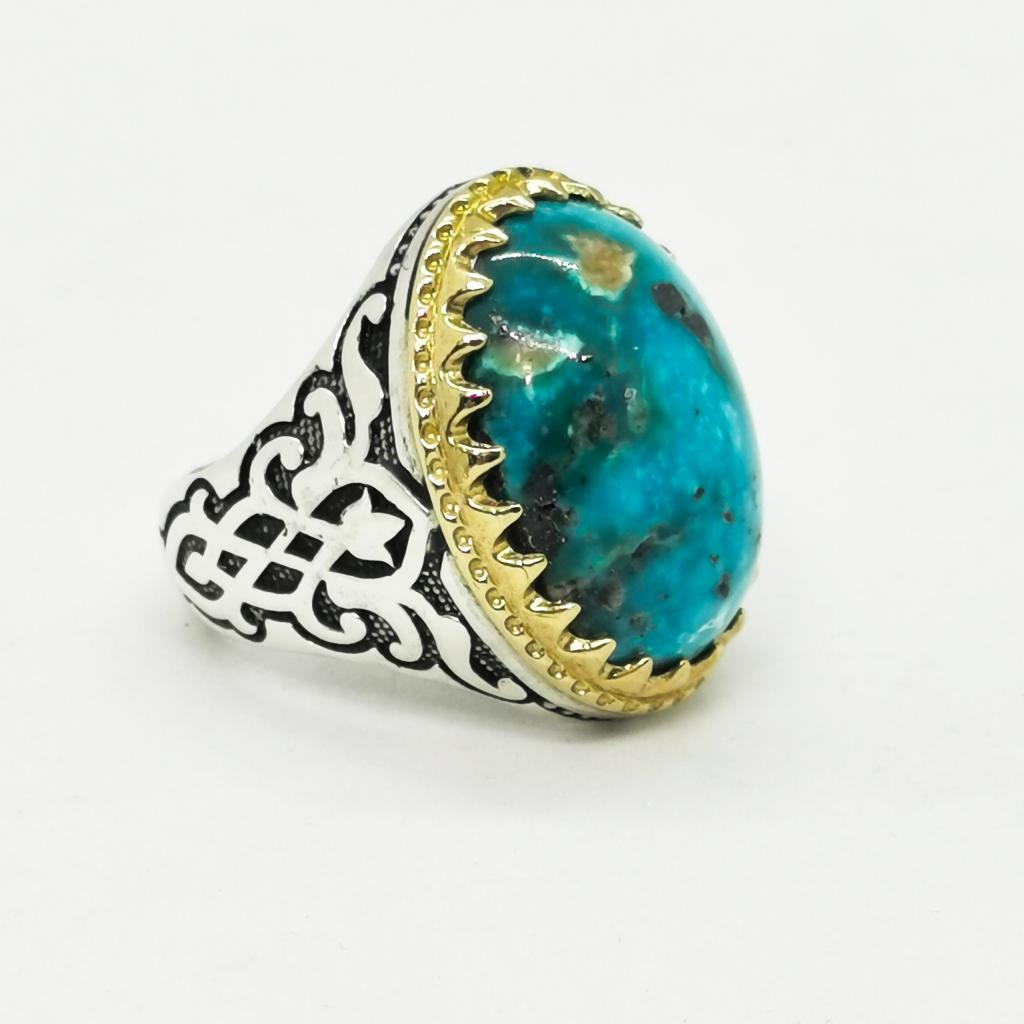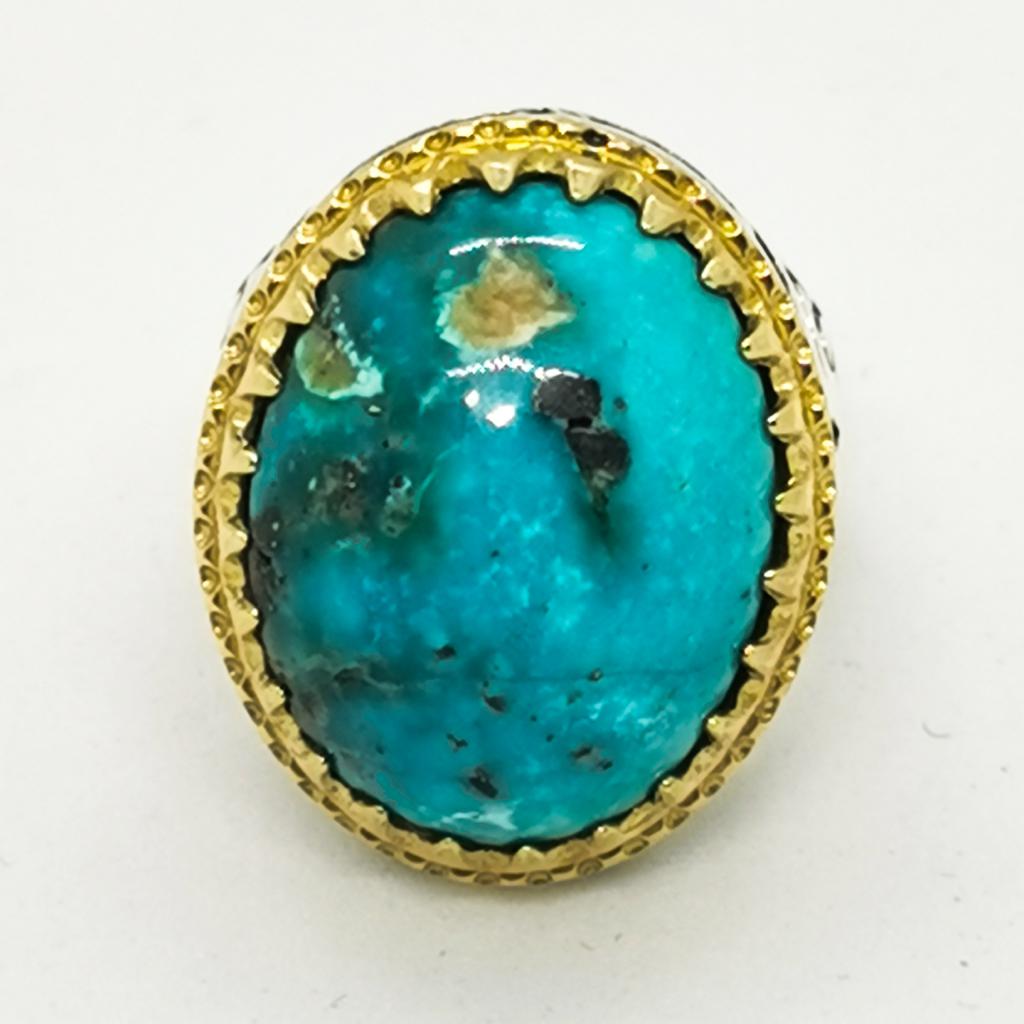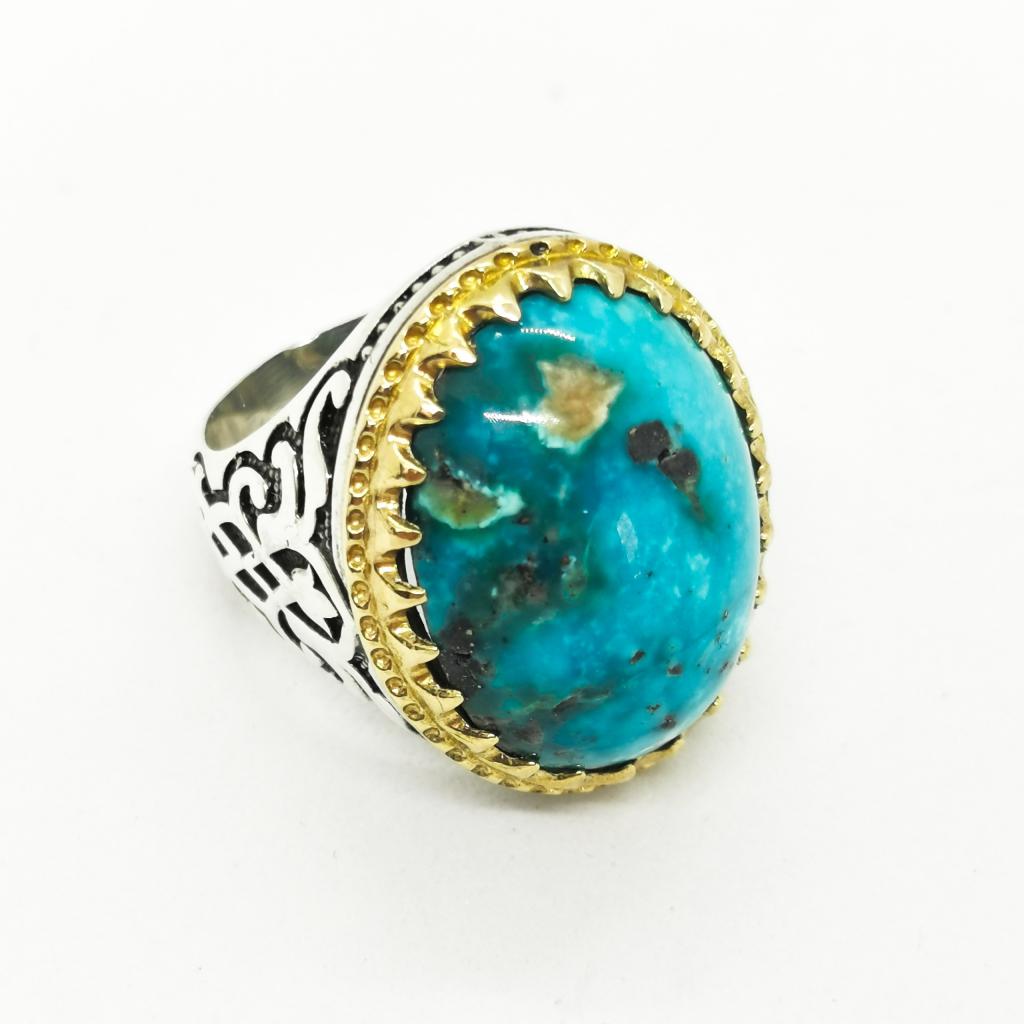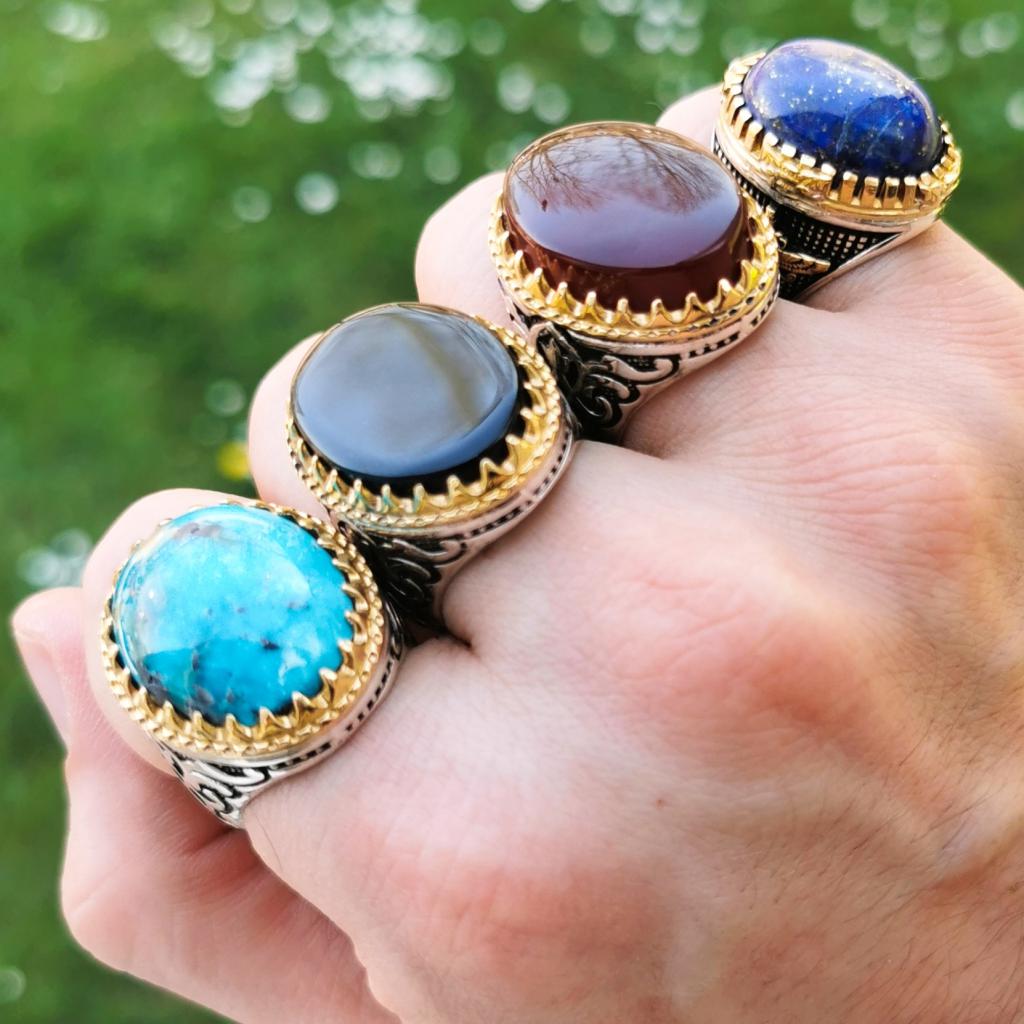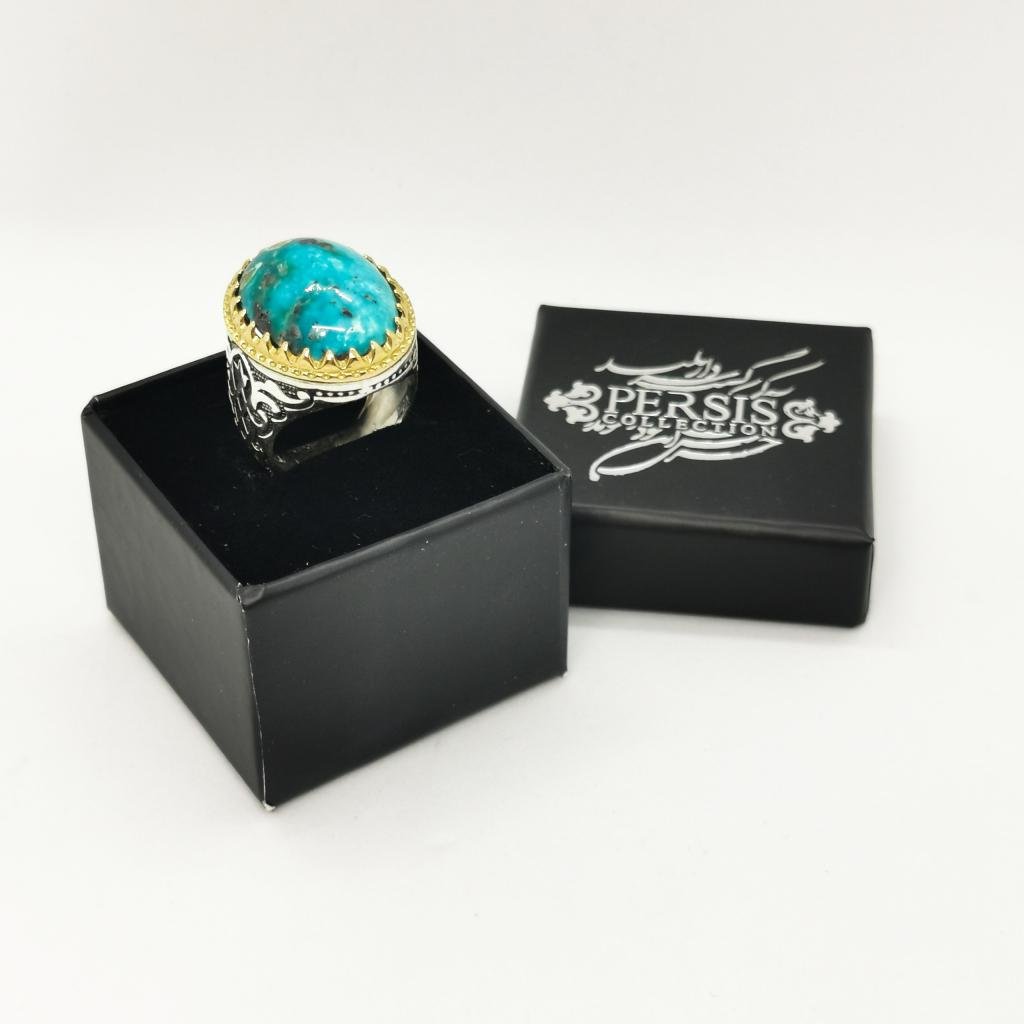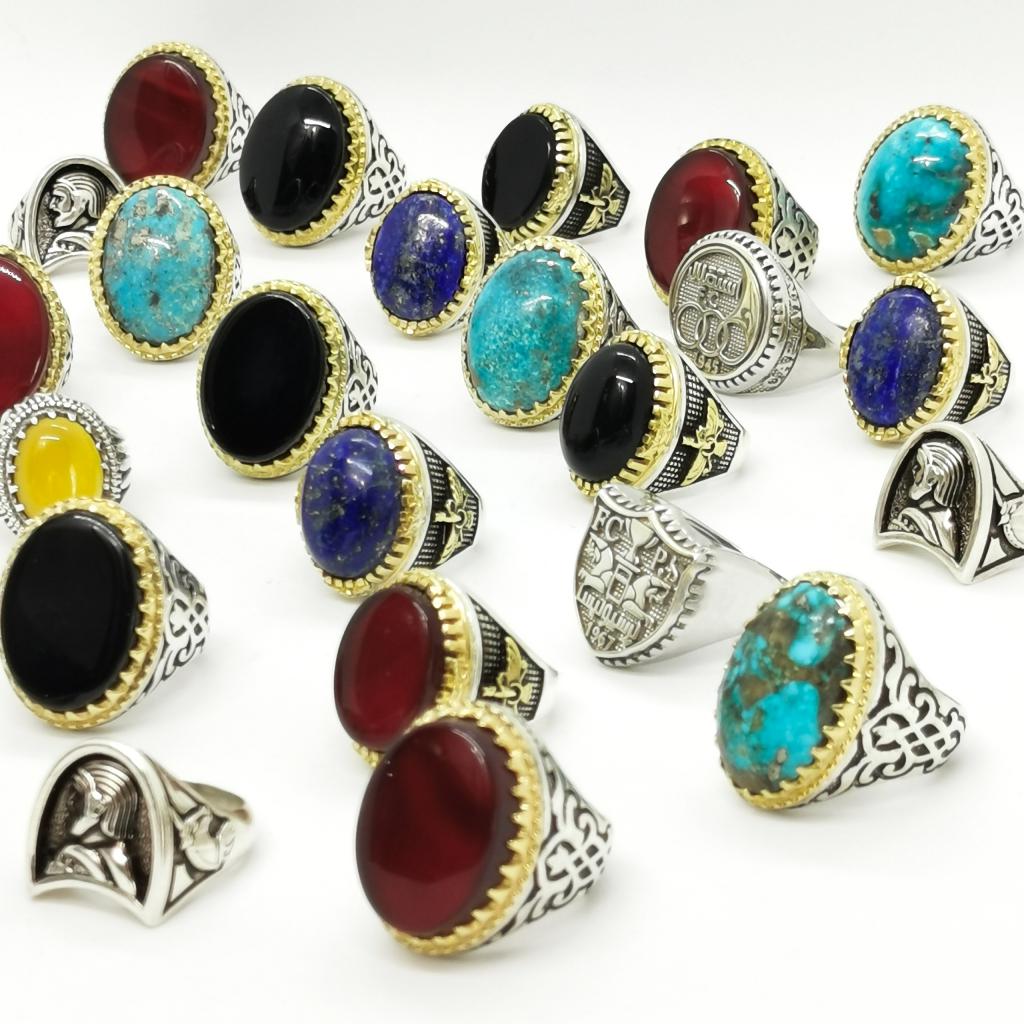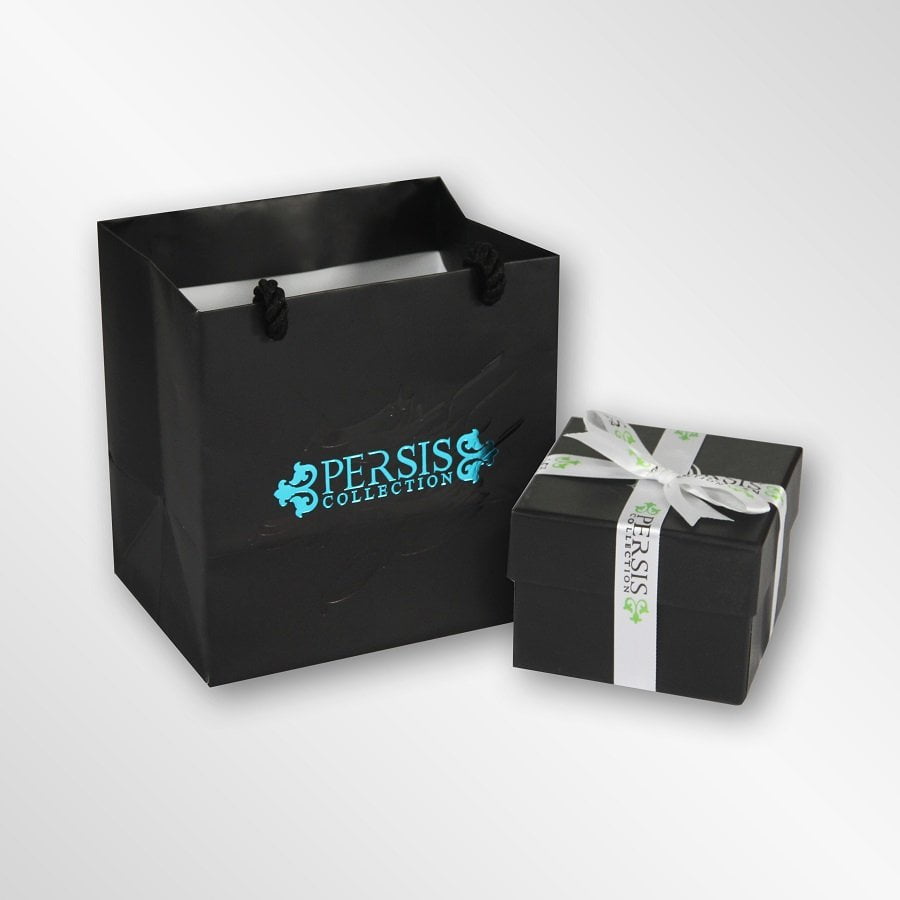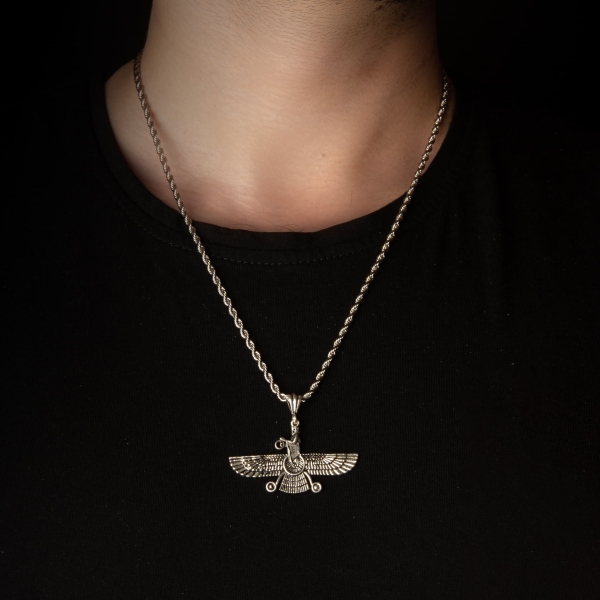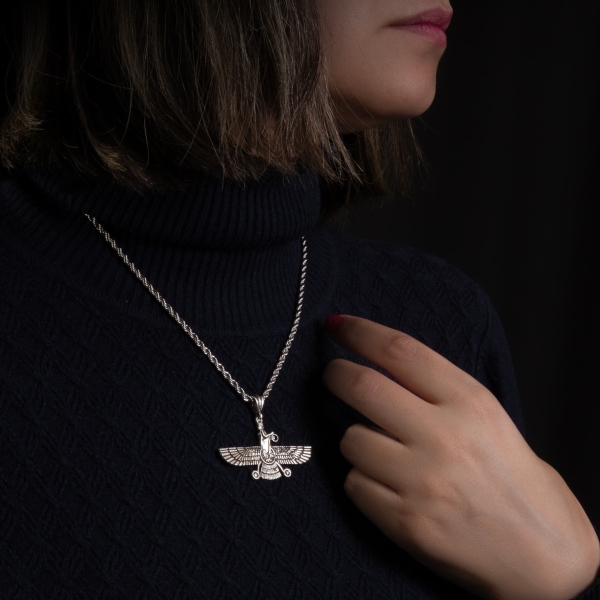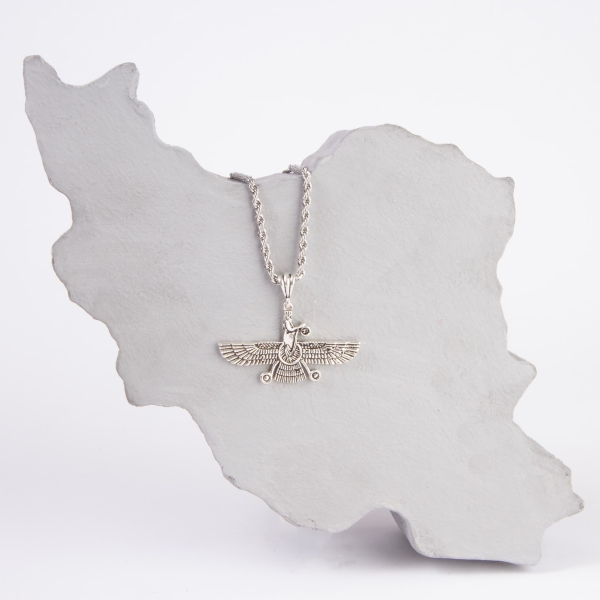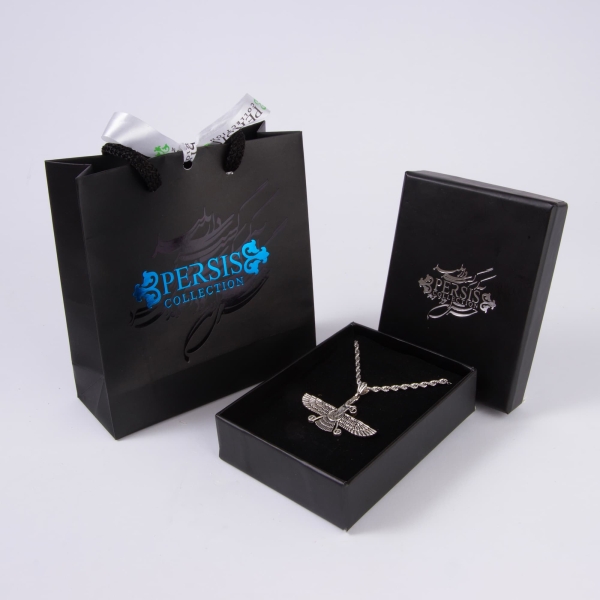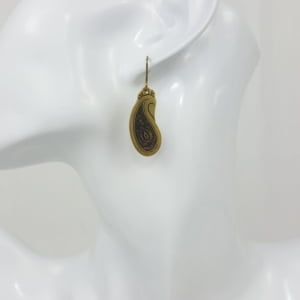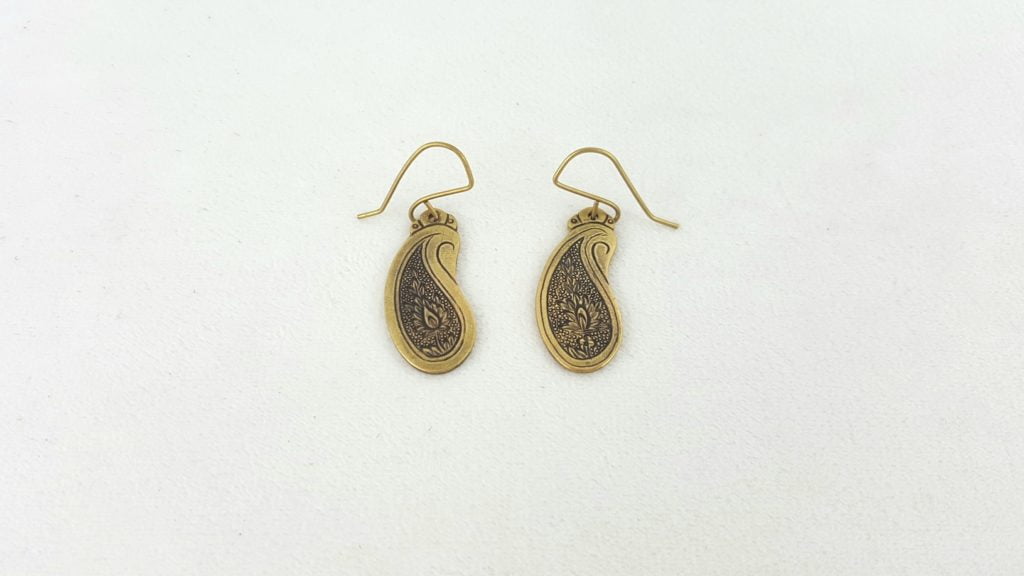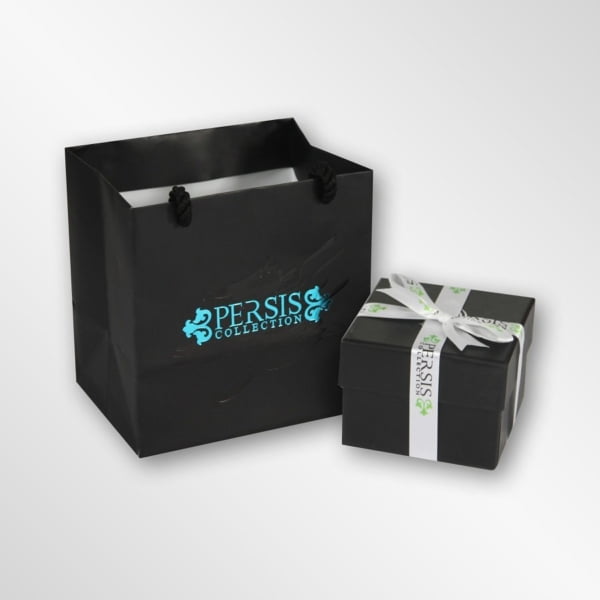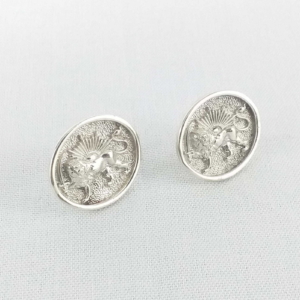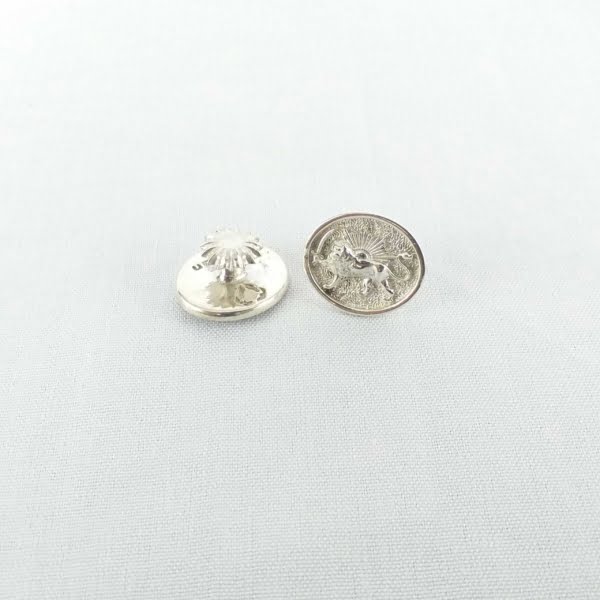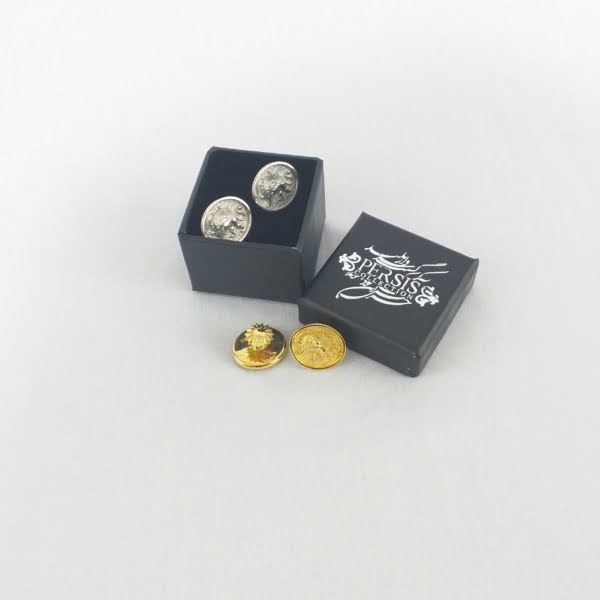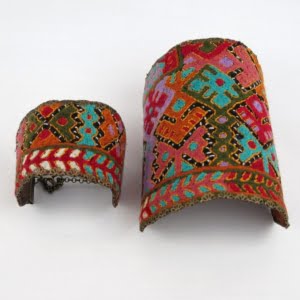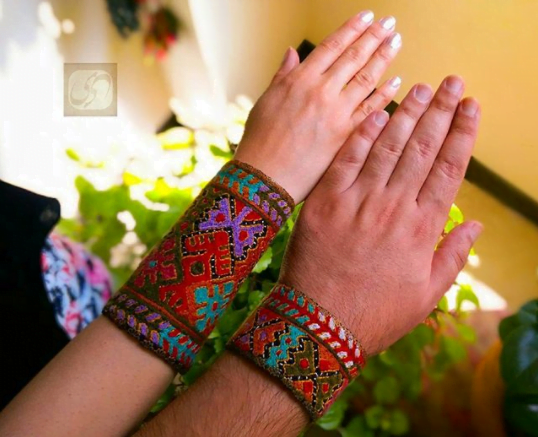Persian Turquoise Ring
The Persian Turquoise ring is beautifully handmade from 925 silver by an expert artist based in Mashhad.
Item Specifications
- Ring Material: 925 Sterling Silver, Brass
- Gemstone: Persian Turquoise
- Gemstone Dimension: 2.7 x 1.8 cm
- Weight: 20 g
- Handmade
What’s Included
- The handmade ring
- A Persis Jewellery gift set.
Size Chart
| Size (UK) | Size (USA) | Inside Circumference |
| S | 8 | 57 mm |
| M | 9 | 59.5 mm |
| L | 10.5 | 63.4 mm |
| XL | 11.5 | 55.9 mm |
| 2XL | 13 | 69.7 mm |
About Turquoise Jewelry
Turquoise is a translucent to matte aluminum phosphate turquoise or green with copper in it. This stone is known as the jewel of the millennium. The name About Turquoise Jewelry is derived from the French word turquoise, which means Turkish stone because it first entered Europe from Turkey. The color we call turquoise was named after the discovery of this stone.
History of Turquoise
The ancient Egyptians used turquoise as a gemstone and decorative stone. The tomb and tomb of Shah Tutankhamun are decorated with turquoise. The ancient Egyptians believed that blue was a symbol of revival, so turquoise was used for both decoration and superstition. Middle Americans made turquoise mosaics, and the Chinese used turquoise for decoration. Turquoise was used by Native Americans for persian jewelry and decoration. Some believed that turquoise was capable of preserving and caring. The Tibetans believed in the healing properties of turquoise and considered it a valuable gem for centuries.






